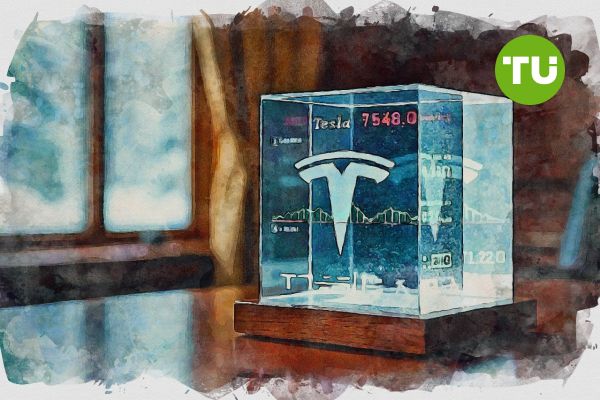Tesla stock drops 3.6% as weak China sales and robotaxi risks pressure stock
 Tesla’s May sales in China dropped 15% year-over-year, continuing an eight-month downtrend
Tesla’s May sales in China dropped 15% year-over-year, continuing an eight-month downtrend
As of June 5, Tesla stock is trading at $332.05, down 3.6% in the past 24 hours.
Tesla (TSLA) continues to struggle under selling pressure, as the stock has declined over 3.6% in the past day and is now 32% below its December 2024 peak.
Highlights
- Tesla shares dropped 3.6% to $332.05 as global EV sales, especially in China and Germany, continued to decline.
- Political risks are rising after Elon Musk's criticism of a Trump-backed tax bill.
- The June 12 robotaxi launch in Austin may provide a short-term catalyst, but technical indicators remain bearish.
The current price of $332.05 places it just above a critical support zone at $325, a level that has held on multiple prior occasions. This level also corresponds to the lower boundary of a bullish pennant formation and closely aligns with the 50-day simple moving average, making it a technically significant threshold.
If TSLA breaks decisively below $325, traders should watch for a further slide toward the $289 area, where the 200-day moving average resides alongside a key horizontal support from prior consolidations in early 2024. The stock's price action shows declining momentum, and the Relative Strength Index (RSI) recently crossed below 50, indicating a shift from bullish to neutral-bearish sentiment. Bollinger Bands are beginning to widen, suggesting increased volatility is likely.

TSLA stock price dynamics (April 2025 - June 2025). Source: TradingView
Meanwhile, upside resistance is forming at $380, which marks the 50% Fibonacci retracement of the December-to-May decline. A sustained breakout above that level would confirm a short-term bullish reversal, with $430 as the next major target. However, given the low trading volume in recent sessions and continued weakness in delivery expectations, the likelihood of a quick recovery appears limited.
Declining global deliveries and political headlines weigh on sentiment
Tesla's current technical fragility is reinforced by worsening fundamentals. Global demand softness continues to affect TSLA's delivery outlook, particularly in its key markets. According to the China Passenger Car Association, Tesla’s May sales in China dropped 15% year-over-year, continuing an eight-month downtrend. European performance is also deteriorating, with German sales falling a staggering 36% from the same month in 2024. These figures contribute to an estimated global Q2 delivery count of 404,850 units—down approximately 9% from the second quarter last year.
Additionally, Elon Musk has found himself entangled in political discourse. The Tesla CEO has publicly criticized a Trump-backed tax proposal that could threaten the viability of electric vehicle (EV) subsidies and affect Tesla’s cost advantages. Though the policy has not yet passed, markets are reacting preemptively, pricing in potential downside risk to Tesla’s future EV competitiveness.
Investors are also assessing the upcoming June 12 launch of Tesla’s robotaxi service in Austin. While the long-term ambition behind autonomous transport has been part of Tesla’s growth narrative for years, expectations for the initial rollout are conservative. Regulatory uncertainties remain high, and the limited scale of this launch means it is unlikely to materially alter Q2 results. Still, any operational success or favorable reviews may restore some investor optimism, particularly if the launch is paired with further product roadmap announcements.
Outlook: bearish-to-neutral bias with eyes on June 12 catalyst
Over the next 2–3 weeks, TSLA will remain vulnerable to downside pressures. Should support at $325 give way, technical selling could accelerate toward $289. Such a move would reflect ongoing weakness in global demand, coupled with persistent macro and political noise. However, traders should not overlook the potential for a short-term rebound, especially if the June 12 robotaxi launch delivers positive headlines or if Elon Musk communicates renewed strategic clarity.
To regain upward momentum, TSLA would need to reclaim the $380 resistance level with strong volume. Only then would a move toward $430 become technically viable. Until that happens, the stock is expected to trade with a bearish-to-neutral bias, with wide intraday swings driven by sentiment shifts and headlines.
Tesla is advancing supply chain independence by ramping up production of its 4680 battery cells and constructing lithium refining facilities. This vertical integration aims to reduce reliance on Chinese suppliers, cut costs, and support scaling for new models like the Cybertruck.













































































































































